

Our Courses

Measurement Systems Analysis
In this course, you will learn to analyze measurement systems for process stability and capability and why having a stable measurement process is imperative prior to performing any statistical analysis. You will analyze continuous measurement systems and statistically characterize both accuracy and precision using R software. You will perform measurement systems analysis for potential, short-term and long-term statistical control and capability.
-
Course by

-
 17 hours
17 hours
-
 English
English

Business Statistics and Analysis Capstone
The Business Statistics and Analysis Capstone is an opportunity to apply various skills developed across the four courses in the specialization to a real life data. The Capstone, in collaboration with an industry partner uses publicly available ‘Housing Data’ to pose various questions typically a client would pose to a data analyst. Your job is to do the relevant statistical analysis and report your findings in response to the questions in a way that anyone can understand. Please remember that this is a Capstone, and has a degree of difficulty/ambiguity higher than the previous four courses.
-
Course by

-
 7 hours
7 hours
-
 English
English
Inferential and Predictive Statistics for Business
This course provides an analytical framework to help you evaluate key problems in a structured fashion and will equip you with tools to better manage the uncertainties that pervade and complicate business processes. To this end, the course aims to cover statistical ideas that apply to managers by discussing two basic themes: first, is recognizing and describing variations present in everything around us, and then modeling and making decisions in the presence of these variations. The fundamental concepts studied in this course will reappear in many other classes and business settings.
-
Course by

-
 Self Paced
Self Paced
-
 19 hours
19 hours
-
 English
English

Exploring and Producing Data for Business Decision Making
This course provides an analytical framework to help you evaluate key problems in a structured fashion and will equip you with tools to better manage the uncertainties that pervade and complicate business processes. Specifically, you will learn how to summarize data and learn concepts of frequency, normal distribution, statistical studies, sampling, and confidence intervals. While you will be introduced to some of the science of what is being taught, the focus will be on applying the methodologies.
-
Course by

-
 Self Paced
Self Paced
-
 23 hours
23 hours
-
 English
English

Introduction to Statistics & Data Analysis in Public Health
Welcome to Introduction to Statistics & Data Analysis in Public Health! This course will teach you the core building blocks of statistical analysis - types of variables, common distributions, hypothesis testing - but, more than that, it will enable you to take a data set you've never seen before, describe its keys features, get to know its strengths and quirks, run some vital basic analyses and then formulate and test hypotheses based on means and proportions. You'll then have a solid grounding to move on to more sophisticated analysis and take the other courses in the series.
-
Course by

-
 Self Paced
Self Paced
-
 16 hours
16 hours
-
 English
English
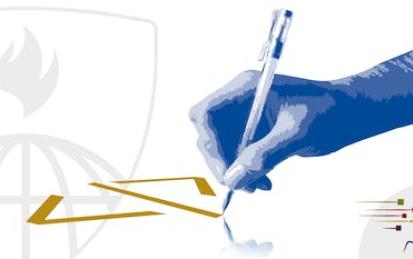
Reproducible Research
This course focuses on the concepts and tools behind reporting modern data analyses in a reproducible manner. Reproducible research is the idea that data analyses, and more generally, scientific claims, are published with their data and software code so that others may verify the findings and build upon them. The need for reproducibility is increasing dramatically as data analyses become more complex, involving larger datasets and more sophisticated computations.
-
Course by

-
 Self Paced
Self Paced
-
 8 hours
8 hours
-
 English
English

Regression Models
Linear models, as their name implies, relates an outcome to a set of predictors of interest using linear assumptions. Regression models, a subset of linear models, are the most important statistical analysis tool in a data scientist’s toolkit. This course covers regression analysis, least squares and inference using regression models. Special cases of the regression model, ANOVA and ANCOVA will be covered as well. Analysis of residuals and variability will be investigated.
-
Course by

-
 Self Paced
Self Paced
-
 54 hours
54 hours
-
 English
English
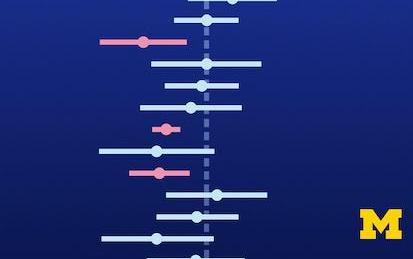
Inferential Statistical Analysis with Python
In this course, we will explore basic principles behind using data for estimation and for assessing theories. We will analyze both categorical data and quantitative data, starting with one population techniques and expanding to handle comparisons of two populations. We will learn how to construct confidence intervals. We will also use sample data to assess whether or not a theory about the value of a parameter is consistent with the data. A major focus will be on interpreting inferential results appropriately.
-
Course by

-
 Self Paced
Self Paced
-
 19 hours
19 hours
-
 English
English

Big Data Emerging Technologies
Every time you use Google to search something, every time you use Facebook, Twitter, Instagram or any other SNS (Social Network Service), and every time you buy from a recommended list of products on Amazon.com you are using a big data system. In addition, big data technology supports your smartphone, smartwatch, Alexa, Siri, and automobile (if it is a newer model) every day. The top companies in the world are currently using big data technology, and every company is in need of advanced big data technology support.
-
Course by

-
 Self Paced
Self Paced
-
 30 hours
30 hours
-
 English
English
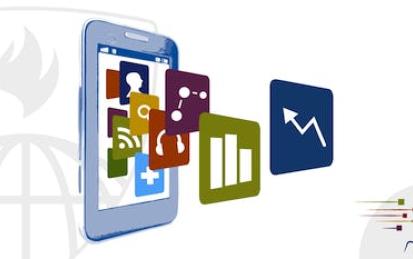
Developing Data Products
A data product is the production output from a statistical analysis. Data products automate complex analysis tasks or use technology to expand the utility of a data informed model, algorithm or inference. This course covers the basics of creating data products using Shiny, R packages, and interactive graphics. The course will focus on the statistical fundamentals of creating a data product that can be used to tell a story about data to a mass audience.
-
Course by

-
 Self Paced
Self Paced
-
 10 hours
10 hours
-
 English
English

Basic Statistics in Python (Correlations and T-tests)
By the end of this project, you will learn how to use Python for basic statistics (including t-tests and correlations). We will learn all the important steps of analysis, including loading, sorting and cleaning data. In this course, we will use exploratory data analysis to understand our data and plot boxplots to visualize the data. Boxplots also allow us to investigate any outliers in our datasets. We will then learn how to examine relationships between the different data using correlations and scatter plots. Finally, we will compare data using t-tests.
-
Course by

-
 Self Paced
Self Paced
-
 3 hours
3 hours
-
 English
English

Data Science Foundations: Statistical Inference
This program is designed to provide the learner with a solid foundation in probability theory to prepare for the broader study of statistics. It will also introduce the learner to the fundamentals of statistics and statistical theory and will equip the learner with the skills required to perform fundamental statistical analysis of a data set in the R programming language. This specialization can be taken for academic credit as part of CU Boulder’s Master of Science in Data Science (MS-DS) degree offered on the Coursera platform.
-
Course by

-
 Self Paced
Self Paced
-
 English
English

IBM Data Science
Prepare for a career in the high-growth field of data science. In this program, you’ll develop the skills, tools, and portfolio to have a competitive edge in the job market as an entry-level data scientist in as little as 4 months. No prior knowledge of computer science or programming languages is required. Data science involves gathering, cleaning, organizing, and analyzing data with the goal of extracting helpful insights and predicting expected outcomes.
-
Course by

-
 Self Paced
Self Paced
-
 English
English

Pre-MBA Statistics
Welcome to the Pre-MBA Statistics course! By the end of this course, you will be able to describe how statistics can be used to summarize, analyze, and interpret data. This course introduces you to some aspects of descriptive and inferential statistics. You will learn to distinguish between various data types and describe the operations that you can execute with each type of data and the right tools to use. The course also discusses the concepts of probability, which form the backbone of statistical analysis.
-
Course by

-
 Self Paced
Self Paced
-
 24 hours
24 hours
-
 English
English
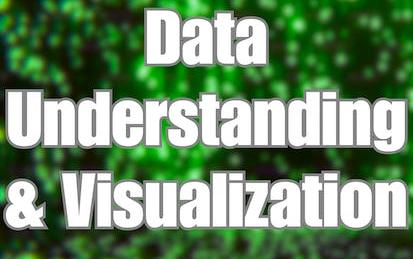
Data Understanding and Visualization
The "Data Understanding and Visualization" course provides students with essential statistical concepts to comprehend and analyze datasets effectively. Participants will learn about central tendency, variation, location, correlation, and other fundamental statistical measures. Additionally, the course introduces data visualization techniques using Pandas, Matplotlib, and Seaborn packages, enabling students to present data visually with appropriate plots for accurate and efficient communication. Learning Objectives: 1.
-
Course by

-
 25 hours
25 hours
-
 English
English

Applied Data Science with R
This Specialization is intended for anyone with a passion for learning who is seeking to develop the job-ready skills, tools, and portfolio to have a competitive edge in the job market as an entry-level data scientist. Through these five online courses, you will develop the skills you need to bring together often disparate and disconnected data sources and use the R programming language to transform data into insights that help you and your stakeholders make more informed decisions. By the end of this Specialization, you will be able to perform basic R programming tasks to complete the data
-
Course by

-
 Self Paced
Self Paced
-
 English
English

Methods and Statistics in Social Sciences
Identify interesting questions, analyze data sets, and correctly interpret results to make solid, evidence-based decisions. This Specialization covers research methods, design and statistical analysis for social science research questions. In the final Capstone Project, you’ll apply the skills you learned by developing your own research question, gathering data, and analyzing and reporting on the results using statistical methods.
-
Course by

-
 Self Paced
Self Paced
-
 English
English

Total Data Quality
This specialization aims to explore the Total Data Quality framework in depth and provide learners with more information about the detailed evaluation of total data quality that needs to happen prior to data analysis. The goal is for learners to incorporate evaluations of data quality into their process as a critical component for all projects.
-
Course by

-
 Self Paced
Self Paced
-
 English
English

Data Science Fundamentals with Python and SQL
Data Science is one of the hottest professions of the decade, and the demand for data scientists who can analyze data and communicate results to inform data driven decisions has never been greater.
-
Course by

-
 Self Paced
Self Paced
-
 English
English

Statistics with Python
This specialization is designed to teach learners beginning and intermediate concepts of statistical analysis using the Python programming language. Learners will learn where data come from, what types of data can be collected, study data design, data management, and how to effectively carry out data exploration and visualization. They will be able to utilize data for estimation and assessing theories, construct confidence intervals, interpret inferential results, and apply more advanced statistical modeling procedures.
-
Course by

-
 Self Paced
Self Paced
-
 English
English

Introduction to Statistical Analysis: Hypothesis Testing
This introductory course is for SAS software users who perform statistical analyses using SAS/STAT software. The focus is on t tests, ANOVA, and linear regression, and includes a brief introduction to logistic regression.
-
Course by

-
 Self Paced
Self Paced
-
 10 hours
10 hours
-
 English
English
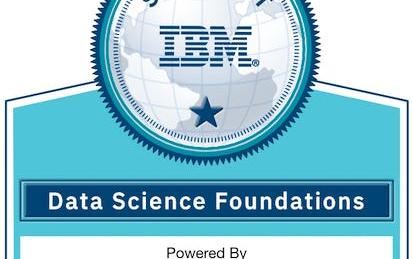
Introduction to Data Science
Interested in learning more about data science, but don’t know where to start? This 4-course Specialization from IBM will provide you with the key foundational skills any data scientist needs to prepare you for a career in data science or further advanced learning in the field. This Specialization will introduce you to what data science is and what data scientists do. You’ll discover the applicability of data science across fields, and learn how data analysis can help you make data driven decisions.
-
Course by

-
 English
English

IBM Data Analytics with Excel and R
Prepare for the in-demand field of data analytics. In this program, you’ll learn high valued skills like Excel, Cognos Analytics, and R programming language to get job-ready in less than 3 months. Data analytics is a strategy-based science where data is analyzed to find trends, answer questions, shape business processes, and aid decision-making. This Professional Certificate focuses on data analysis using Microsoft Excel and R programming language.
-
Course by

-
 Self Paced
Self Paced
-
 English
English

Doing Clinical Research: Biostatistics with the Wolfram Language
This course aims to empower you to do statistical tests, ready for incorporation into your dissertations, research papers, and presentations. The ability to summarize data, create plots and charts, and to do the statistical tests that you commonly see in the literature is a powerful skill indeed. There are powerful tools readily available to achieve these goals. None are quite as easy to learn, yet as powerful to use, as the Wolfram Language. Knowledge is literally built into the language.
-
Course by

-
 Self Paced
Self Paced
-
 15 hours
15 hours
-
 English
English

Statistics for Data Science with Python
This Statistics for Data Science course is designed to introduce you to the basic principles of statistical methods and procedures used for data analysis. After completing this course you will have practical knowledge of crucial topics in statistics including - data gathering, summarizing data using descriptive statistics, displaying and visualizing data, examining relationships between variables, probability distributions, expected values, hypothesis testing, introduction to ANOVA (analysis of variance), regression and correlation analysis.
-
Course by

-
 Self Paced
Self Paced
-
 14 hours
14 hours
-
 English
English



